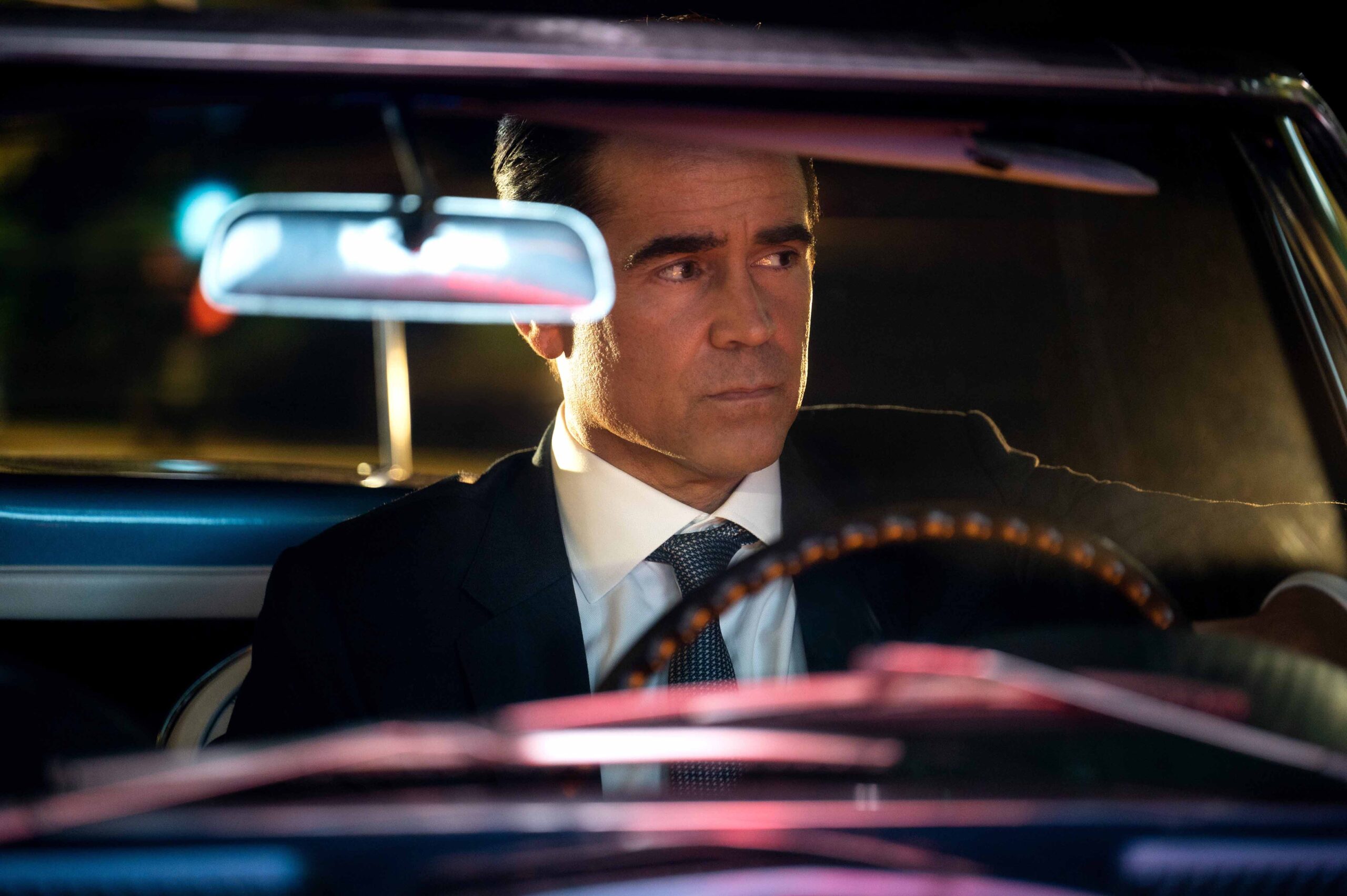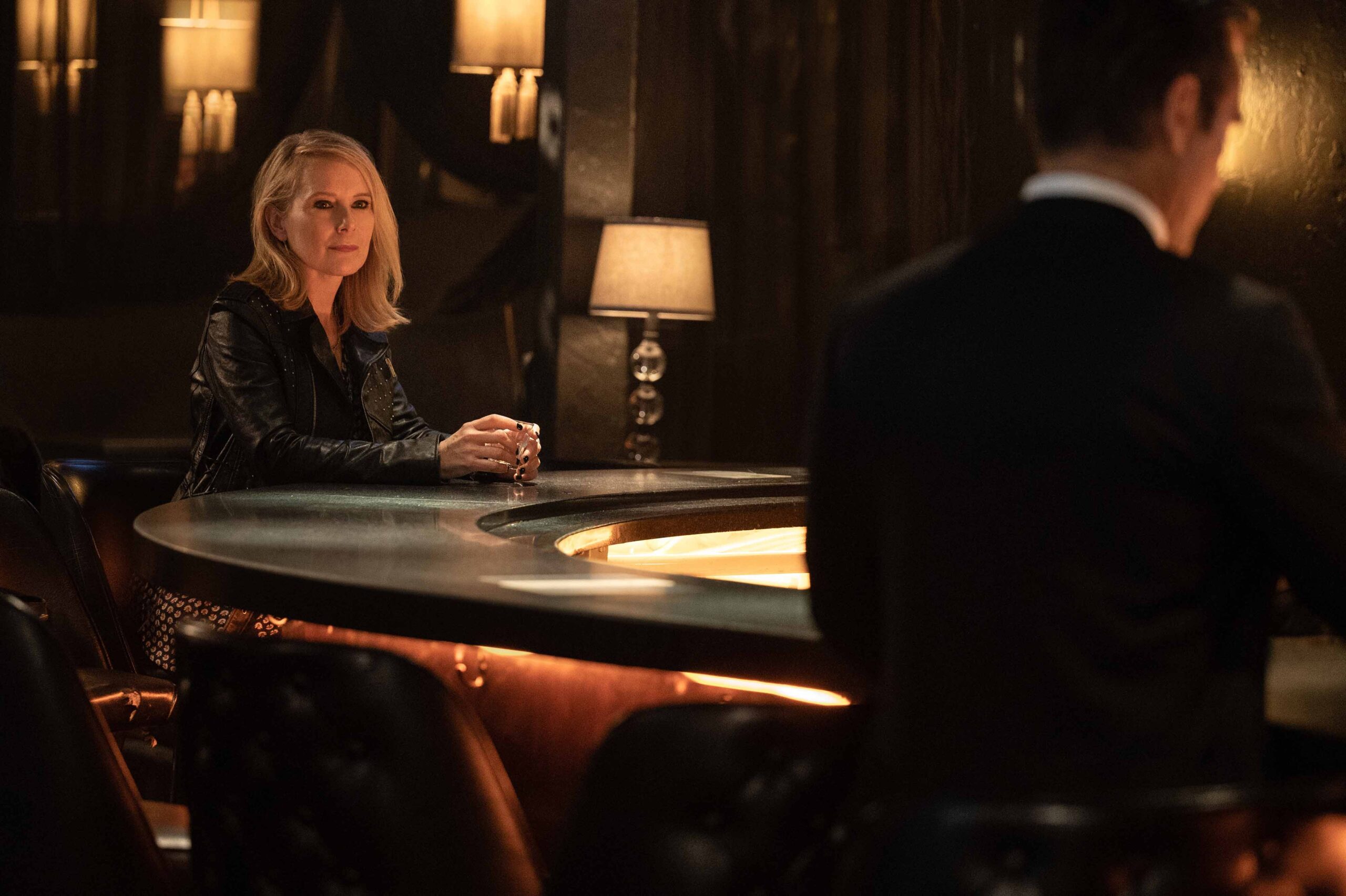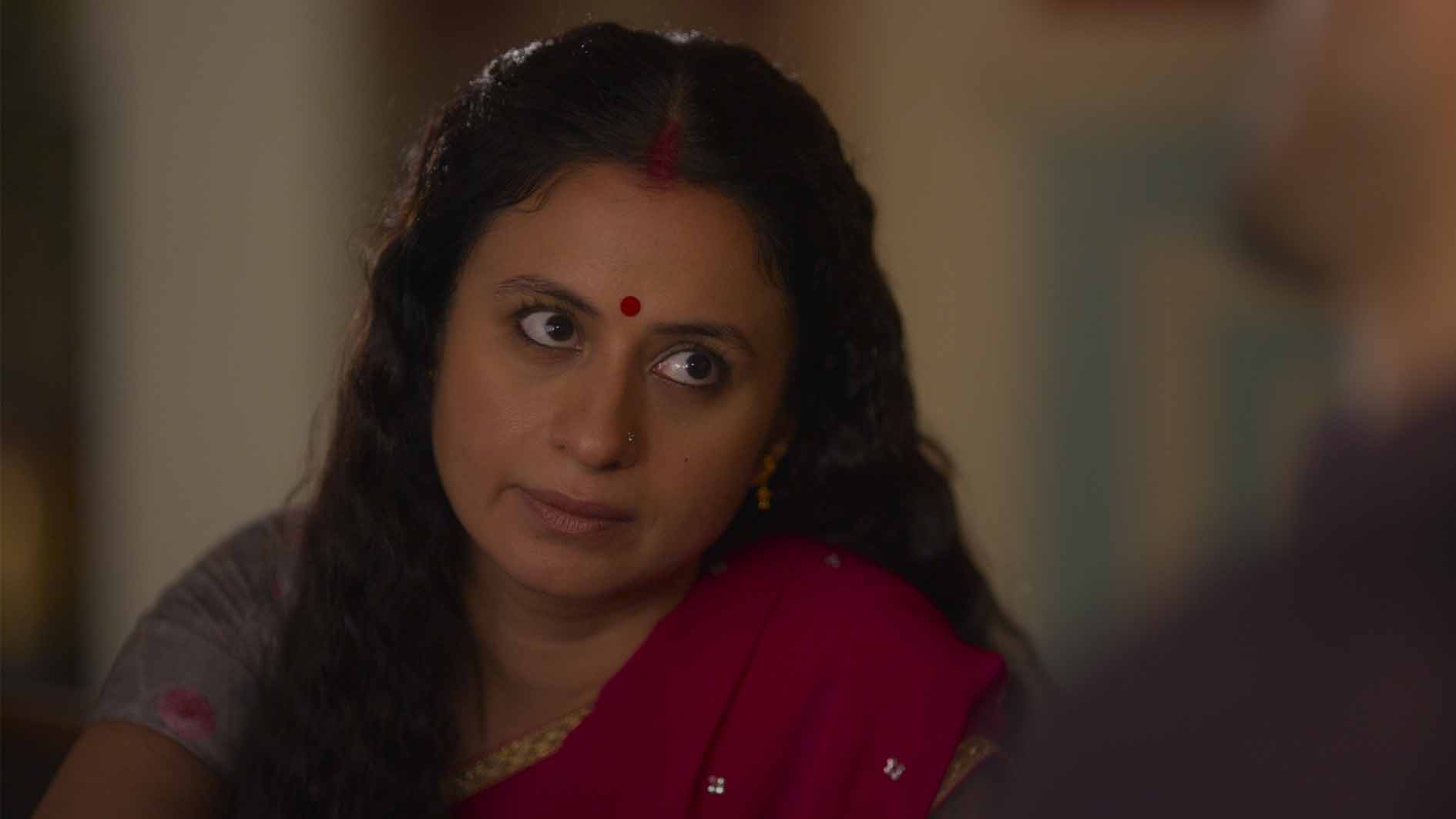Colin Farrell-led show is a love letter to film noir but its otherworldly late-game reveal may prove to be divisive.
Akhil Arora, a member of the Film Critics Guild and a Rotten Tomatoes-certified film critic with over eight years of experience

Modern-day Los Angeles, a troubled private detective, and a missing drug-addled young woman. Those are the basics of Sugar—the new Apple TV+ neo-noir series led by Colin Farrell—which feels wistful for times gone by. That’s evident from what its protagonist drives (a blue retro open-top Corvette coupé), how he looks (well moisturised swept back hair), his passions (an avowed old Hollywood cinephile), and how he dresses (white shirt, black suit, black pants, and black shoes—the full gamut). The orchestral background score, made up of pipes, piano, and the saxophone, further adds to it. And then there are all the overt references. Forget riffing on classic film noirs, Sugar outright invokes them.
That includes films made by Fritz Lang, Alfred Hitchcock, Billy Wilder, Nicholas Ray, Lewis Milestone, and Robert Siodmak—or those starring the likes of Rita Hayworth, Humphrey Bogart, Ava Gardner, Burt Lancaster, Barbara Stanwyck, Tony Curtis, Shelley Winters, and Joseph Cotten. Or in a couple of cases, made by and starring Orson Welles.
And I’m not talking mentions. The Apple TV+ series goes further and slips in shots and dialogue from said films into its scenes. Like plonk them right in the middle. The common link could be objects, moods, framing, expressions, or what the scene is about. At times, frames in Sugar will be inter-spliced with shots of the same location from another decade. This occurs over and over across the season, at least once if not more in each of the eight half-hour episodes. It’s obvious that creator Mark Protosevich—who last wrote the screenplay for Spike Lee’s neo-noir Oldboy remake—has a deep reverence for all things film noir. The era, the history, and the pop culture. (To be honest, the perfect series title would have been L.A. Noire. If only.)
A slowly peeled onion
Naturally then, Sugar is meta to a degree. Given how openly it embraces its love for the film medium and the detective genre, more than once we end up with lines, scenes, and moments that refer to the structure itself. The larger whole. At the same time, the Apple series has all the ingredients you’d expect from something of its kind. Lies, betrayals, misdirection, red herrings, hidden agendas, and the keeping of secrets—it’s all there. Sugar thoroughly embraces the tropes and understands the allure of a mystery.
Like its protagonist, it’s broody, obscured, and never fully in view. It slowly peels itself like the layers of an onion. (Except there’s more than one onion you might be expecting.) This is a very considered show. Everything is done at a deliberate pace—Fernando Meirelles, of the renowned Brazilian epic City of God, is in charge of directing duties on most episodes—and the Apple series takes its own sweet time. It has no desire to rush into anything or rush past anything.
Sugar plot: polyglot PI and Hollywood heiress
Private investigator John Sugar (Farrell) wants everyone—the audience and the people he’s hurting—to know that he doesn’t like hurting people. He probably means it too, given he says it in dialogue and narration in the opening five minutes. What he does enjoy is finding lost people and reuniting them with their loved ones. He’s good at it too, he says. (The narration isn’t omnipresent on Sugar, but there’s plenty of it. It’s part confessional, part reframing. It also feels like Sugar is clueing you in—like he’s talking to you, so you feel like you’re on the inside and not the outside looking in.) Sugar is quite worldly—he speaks English, Arabic, French, German, Japanese, and Spanish, and possibly more languages that we never get to hear. And he’s got other talents like superfast reflexes and metabolism.
Returning home to Los Angeles after a job abroad, Sugar meets his next client: retired Hollywood producer Jonathan Siegel (James Cromwell, from Succession). His 25-year-old granddaughter Olivia (Sydney Chandler) has gone missing. Curiously, the other Siegels—her dad Bernie (Dennis Boutsikaris, from Better Call Saul) and half-brother David “Davy” (Nate Corddry, from For All Mankind)—aren’t interested in finding Olivia. They believe she will come back, as she has in the past after her drug-fuelled adventures. But both John and Jonathan think it’s different this time. Sugar’s handler Ruby (Kirby, from Cruella) wants him to take a break and walk away from the case, but the massive film addict he is, John can’t help himself but take it up.

Mysteries and troubles
It might also have something to do with Djen, a woman from Sugar’s past. Lost and lonely, Sugar has mental scars and demons that become clear over the course of the season. As the narrative unfolds, we learn also more about Olivia, the other Siegels, John’s past, the polyglot society he’s part of, and the people involved with the crime. These circles intersect in ways that you won’t expect.
The central mystery is a story about power and privilege—on one level, it’s a #MeToo story, about scared men trying to protect themselves and consequences be damned. It’s also a story about immigrants, young women, and the value of human life. Just like Dahaad—the Prime Video series led by Sonakshi Sinha—explored how young women are susceptible and exploited in India, Sugar touches upon the cracks, faults, and wilful ignorance in the so-called first world.
But there isn’t anywhere near as much weight to that here. The show is much more focused on its protagonist and his burgeoning relationship with Bernie’s ex-wife Melanie Mackie (Amy Ryan, from Only Murders in the Building) who was close to the missing Siegel.
Sugar drills into the human experience
And while the hunt for Olivia offers its own share of turns and revelations, there’s something else too in Sugar. A wild twist deep into the run—one that’s obliquely hinted at now and then—sends off the Apple series into another world altogether. Looking back, I could see all the signs but I’m not sure how I feel about the grand genre-bending twist honestly. On one level, Sugar is completely altered by it. After all, it has to deal with the reveal—and that’s where more of the limited runtime goes. On the other hand, to be fair, the twist is really about doubling down on some of the show’s fundamentals. How we see, adapt, react, behave, and perceive. Who we are and what it means to be human.

That’s why Sugar—and by extension, we—love watching movies because it contains the breadth of the human experience. It’s a form of voyeurism and people-watching. It lets you do that on a more intimate scale, up closer than you might feel comfortable in real life. It transports us. When the credits roll, you know you have to re-enter your life even as a part of you wants to wallow in its world and stay a little longer with its characters. Built to fill that seedy dimly-lit alley in your heart, the moody Apple TV+ series tends to be a tad over the edge—and it may not always be fulfilling but it never fails to be intriguing.
The first two episodes of Sugar are out Friday, April 5 on Apple TV+. A new episode drops weekly every Friday until May 17.
- Every Indian Netflix original movie, ranked – October 25, 2024
- The opening night of the 2024 MAMI Mumbai Film Festival was a joke – October 19, 2024
- Agatha All Along episode 5: what time is it out? – October 9, 2024




What do you think?